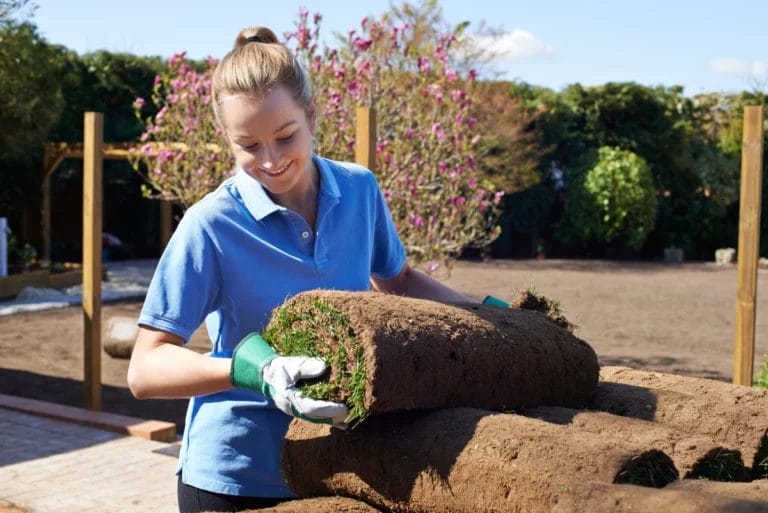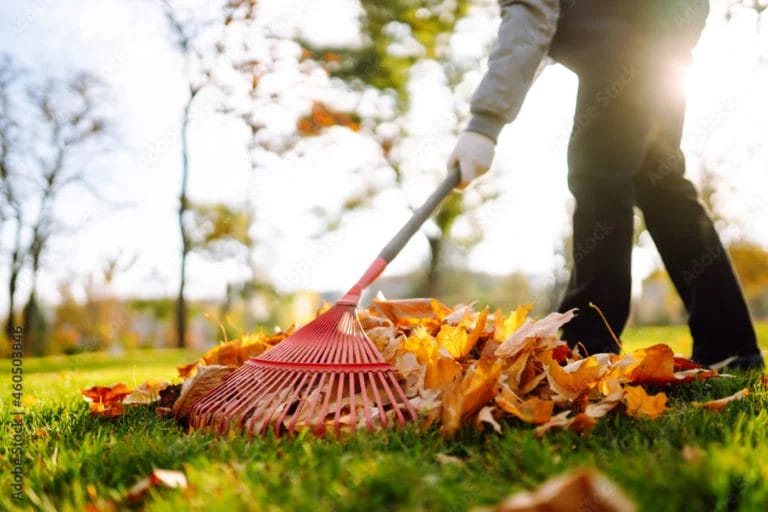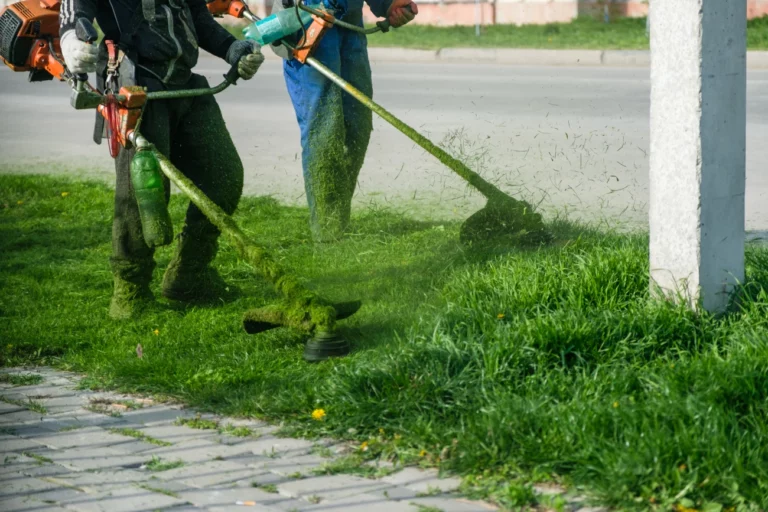Landscaping injuries are more common than you might think. Mishaps can range from minor scrapes to severe accidents. When these injuries occur, they put your employees’ health and your business’s stability at risk.
In fact, according to the U.S. Bureau of Labor Statistics, in 2023, approximately 2 out of every 100 full-time workers in landscaping services experienced injuries or illnesses that required them to take time off work, compared to about 1 out of every 100 workers across all private industries.
Understanding the causes of landscaping injuries and taking proactive steps to prevent them is key to protecting your workforce and your bottom line.
What Are the Most Common Landscaping Injuries?
Over the past decade, 3.2 million people in the U.S. — landscapers and homeowners — have been injured while doing yard work.
So, before you step onto a landscaping job site, know what you’re up against. Slips, cuts, chemical burns — these are just a few of the landscape hazards and risks that come with the job. Learn how to minimize the most common insurance claims before they happen.
Slips, Trips, and Falls
Uneven terrain, wet grass, and hidden obstacles create slipping hazards. Workers navigating these conditions risk sprained ankles, broken bones, or concussions.
Proper footwear with slip-resistant soles and maintaining clear pathways prevent most accidents. If a fall does occur, assess for injuries immediately and seek medical attention if needed.
Flying Debris and Rocks
Lawnmowers, weed trimmers, and other landscaping equipment can kick up rocks and debris at high speeds. These projectiles pose serious injury risks, particularly to the eyes and face.
To reduce the chance of injury, workers should always wear safety goggles and maintain a safe distance from operating equipment.
Cuts and Lacerations
Sharp tools like hedge trimmers, chainsaws, and lawnmowers can cause severe cuts. Even minor lacerations can lead to infections if not properly treated.
Workers should wear cut-resistant gloves, keep blades sharp for cleaner cuts, and use tools correctly. Plus, first aid training ensures quick and proper wound care.
Chemical Burns
Fertilizers, pesticides, and herbicides contain harsh chemicals that can cause burns or respiratory issues. Without protective gear, these substances can irritate the skin and eyes.
Ensure you and your crew wear long sleeves, gloves, and safety goggles while handling chemicals. Furthermore, proper storage and handling of chemicals minimizes exposure risks.
Strains and Sprains
Heavy lifting and repetitive motions put stress on muscles and joints. Carrying sod, moving stones, or bending over for long periods can lead to back, shoulder, and knee injuries.
Encourage workers to use proper lifting techniques, take breaks, and stretch before shifts to reduce strain-related landscaping injuries.
Heat-Related Illnesses
The CDC reports that 50% to 70% of outdoor heat-related deaths happen within the first few days on the job due to lack of heat acclimatization — and landscaping is one of the most affected industries.
Landscapers often work in direct sunlight for hours, increasing their risk of heat exhaustion or heat stroke. Symptoms like dizziness, nausea, and confusion signal heat-related illness.
Provide shaded rest areas, frequent hydration breaks, and lightweight protective clothing to help prevent overheating.

Learn How to Handle Landscaping Injuries
Landscaping hazards are unpredictable, but your response shouldn’t be. Knowing exactly what to do when an injury occurs can mean the difference between a smooth recovery and a costly insurance claim.
Assess the injury and provide first aid | Immediate assessment determines the severity of an injury. Minor wounds can be treated with basic first aid, while serious injuries require emergency care. Keep a well-stocked first aid kit on hand at all times. |
Take photos and write an incident report | Documenting the injury with photos and a written report creates a clear record for insurance claims. Include details about the location, cause, and immediate response to the injury. |
Get professional treatment if necessary | Professional medical evaluation ensures proper treatment for anything beyond minor cuts or bruises. Delaying care can lead to complications and increased liability. |
Inform your insurance provider | Workers compensation insurance covers employee injuries, while general liability insurance protects against claims from third parties. Promptly reporting incidents helps streamline the claims process. |
Submit necessary paperwork and medical records | Filing claims requires submitting medical reports and incident documentation. Ensure all paperwork is accurate to avoid delays in claim processing. |
Monitor recovery and review safety protocols | After an injury, tracking recovery ensures employees return to work safely. Reviewing safety protocols helps identify what went wrong and prevent similar incidents in the future. |
How Can You Avoid Landscape Hazards and Risks?
Risks are a natural aspect of the landscaping industry, but they don’t have to define your business. Proactively managing landscape hazards and risks ensures a safer worksite, fewer injuries, and less downtime. Follow the best practices below to minimize risk on the job.
Assess Each Job Site
Before starting work, identify potential hazards such as uneven ground, hidden tree roots, or overhead power lines. Clear debris and mark danger zones.
Provide Proper Training
Ensure employees receive training on tool operation, chemical handling, and emergency response. Prioritize regular safety meetings to reinforce best practices.
Use Quality Equipment
Invest in high-quality, well-maintained tools to reduce malfunctions that can cause injuries. Make sure employees use the correct tool for each task and follow manufacturer guidelines.
Maintain Equipment Regularly
Dull blades, faulty wiring, and worn-out machinery increase the likelihood of injury. Routine inspections and timely repairs keep equipment functioning safely
Enforce Safety Gear
Hard hats, steel-toed boots, gloves, and eye protection minimize injury risks. Establish safety gear requirements and replace damaged equipment immediately.
How Landscaping Insurance Protects Your Business
One injury can mean thousands in medical bills. Landscaping injuries aren’t just painful; they’re expensive. The right insurance policy is designed to save your business from financial disaster when accidents happen.
Workers Compensation Insurance
Workers compensation insurance helps your employees receive medical and disability benefits if they get injured or ill due to a work-related incident. This coverage protects your business by ensuring employees get the care and financial support they need when they’re hurt.
It covers:
- Medical expenses related to work injuries
- Lost wages during recovery
- Disability benefits, including permanent or temporary disabilities
- Ongoing care costs for long-term injuries
- Funeral expenses in the event of a work-related fatality
It doesn’t cover:
- Injuries caused intentionally by an employee
- Court-ordered fines or punitive damages for injury to an employee working illegally
- Penalties imposed for violating laws
- Injuries outside the United States, unless involving a U.S. citizen employee working temporarily abroad
- Damages from occupational diseases, unemployment compensation, or similar laws
- Damages arising out of coercion, criticism, demotion, evaluation, reassignment, discipline, defamation, harassment, humiliation, discrimination against or termination of any employee, or any personnel practices, policies, acts or omissions
Sample scenarios:
- An employee sprains their back while lifting heavy equipment. Workers comp covers their medical treatment, lost wages, and rehabilitation costs.
- A worker injures their knee while performing landscaping tasks. The policy covers their medical bills, permanent disability benefits, and ongoing care.
General Liability Insurance
General liability insurance protects your business from third-party claims. It covers both bodily injury and property damage.
It covers:
- Medical bills if a customer or bystander gets injured
- Legal fees for defending your business in third-party claims
- Costs to repair or replace damaged client property
It doesn’t cover:
- Injuries to you or your employees (workers compensation covers this)
- Damage to your own tools, equipment, or property (trailer and equipment insurance covers this)
Sample scenarios:
- A client walks outside to inspect your crew’s work and trips over a bucket left on the path, injuring their wrist. General liability insurance covers their medical expenses and legal fees if they sue for negligence.
- A rock is kicked up by your lawn mower and breaks a nearby car window. Your general liability insurance covers the cost of repairing or replacing the vehicle’s window.
Pro Tip: Want the full scoop on landscaping insurance? Get all the details you need in our complete landscaping insurance guide!
Questions About Landscaping Injuries
Does workers compensation insurance cover injuries during breaks?
Injuries during work breaks can be tricky when it comes to workers compensation. Generally, if an employee gets injured during a break while on the job site, workers comp will cover it. This includes injuries that happen in break rooms, cafeterias, or other designated areas.
However, if the break occurs off-premises or the employee is free to leave, the injury might not be covered unless the employee performs work-related tasks. If an employee is on-call during a break or participating in a company-sponsored activity, workers compensation is more likely to apply.
How do I file a claim when an employee or client gets injured?
To file a claim with Insurance Canopy, fill out the form in your online dashboard and submit any necessary documents related to the injury. Include all relevant details, such as the nature of the injury, location, and medical information, so the claim can be processed smoothly and efficiently.
How much does landscaping insurance cost?
Landscaping insurance with us starts at just $31 per month, but insurance costs can vary depending on your business’s specifics. Submit your application to get a personalized quote based on your needs.
Mitigate Risks With Landscaping Insurance
Constantly assess for landscaping hazards to reduce injuries to your team. Knowing how to prevent injuries — and how to handle them when they happen — gives your business an edge. The last thing you want is to face an injury claim without protection. Get the coverage that keeps you, your team, and your business moving forward.





